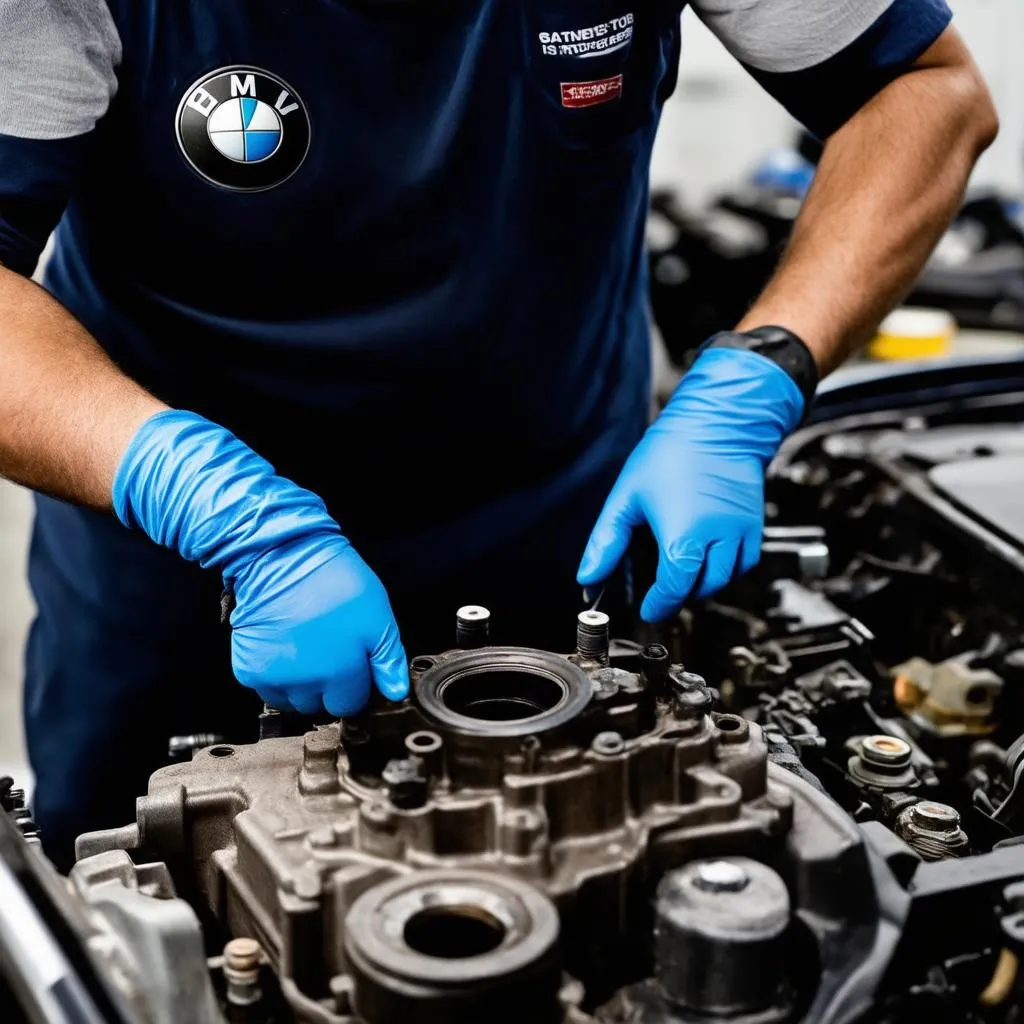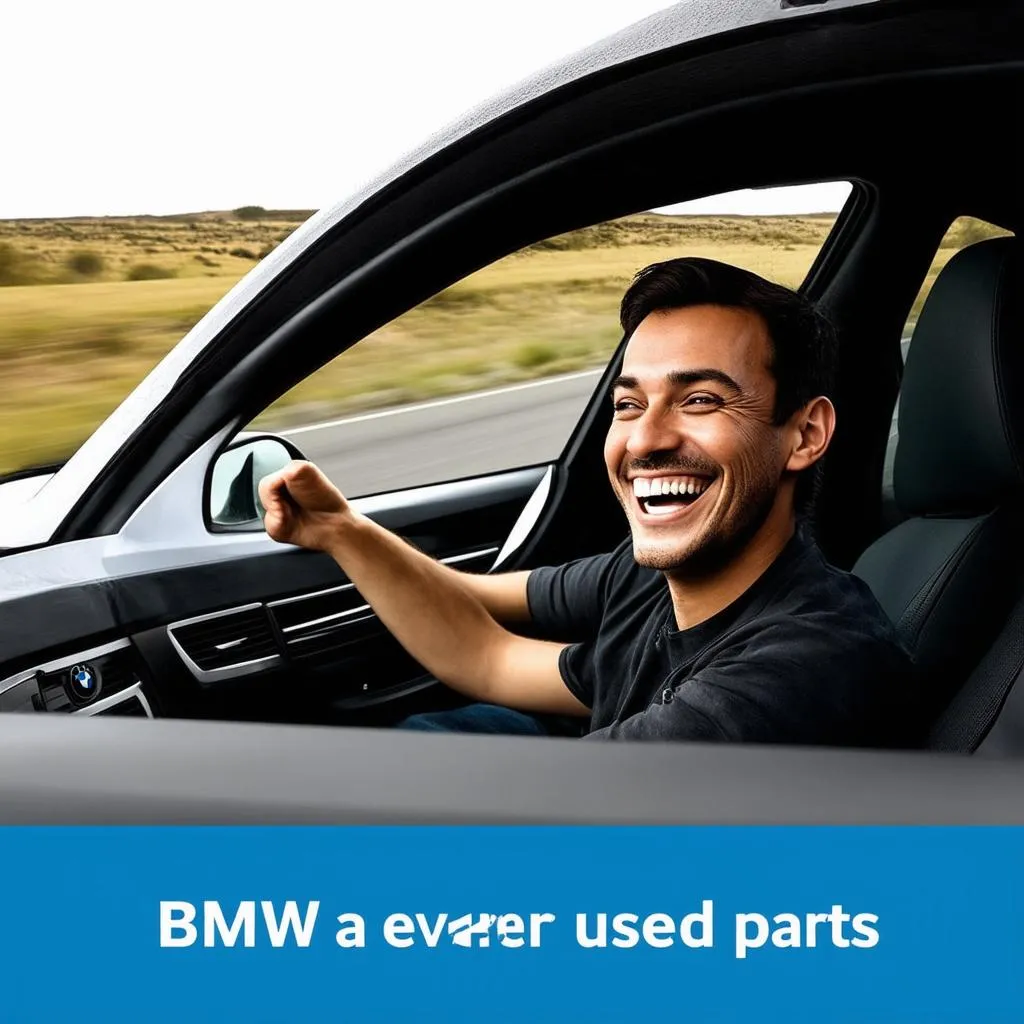Used BMW Parts: A Guide to Finding the Right Fit for Your Bimmer
“A stitch in time saves nine,” they say. And that certainly applies to your beloved BMW. But when parts start wearing out, it can be tough to know where to turn. The temptation to go for cheap used parts is strong, but is it the right choice for your Bimmer? Let’s dive into the world of used BMW parts, explore the pros and cons, and guide you through making the best decision for your prized possession.
Understanding the Need for Used BMW Parts
The need for used BMW parts can arise from a variety of factors:
1. Cost: It’s no secret that BMW parts can be expensive. This is especially true for newer models and high-performance engines. Opting for used parts can save you a significant amount of money, especially when dealing with routine maintenance or wear-and-tear items.
2. Availability: Sometimes, you just can’t find the part you need brand new, especially for older BMW models. This is where used parts come in, offering a wider range of options, even for vintage models.
3. Sustainability: Choosing used parts can be a more environmentally friendly option than buying brand new. You’re giving a part a second life, reducing the demand for new materials and manufacturing processes.
The Pros and Cons of Used BMW Parts
Pros:
- Cost-Effective: The most significant advantage of used BMW parts is their affordability. You can often find parts at a fraction of the cost of new ones, especially for common wear items.
- Availability: Finding hard-to-find or discontinued parts for older BMWs is much easier with used parts.
- Sustainability: Choosing used parts reduces the demand for new materials and manufacturing processes, minimizing your environmental footprint.
- Potential for Authenticity: Depending on the source, used parts can offer the same level of quality as original equipment manufacturer (OEM) parts, especially if they’re sourced from reputable dismantlers or salvage yards.
Cons:
- Unknown History: The most significant drawback of used BMW parts is their uncertain history. You don’t know how the part was used, how many miles it has endured, or whether it has been subjected to any damage or modifications.
- Quality Variation: The quality of used parts can vary significantly depending on the source and the condition of the part. Some parts might be worn out or damaged, leading to potential problems down the line.
- Limited Warranty: Most used parts come with limited or no warranty, meaning you might have to bear the cost of any future repairs if the part fails.
- Ethical Considerations: Some used parts might come from salvaged vehicles involved in accidents, which could raise ethical concerns for those who value sustainable and ethical practices.
Finding the Right Used BMW Parts
Where to Find Used Parts:
- Online Marketplaces: Websites like eBay, Craigslist, and Facebook Marketplace offer a wide range of used BMW parts.
- Salvage Yards: Salvage yards specialize in dismantling vehicles, offering a variety of used parts.
- Specialized BMW Part Dealers: Many businesses specialize in selling used BMW parts, offering a wider selection and potentially better quality assurance.
- BMW Clubs and Forums: BMW enthusiast clubs and forums can be a valuable resource for finding parts, as members often sell or trade parts among themselves.
Tips for Buying Used Parts:
- Research the Seller: Always check the seller’s reputation and feedback to ensure they are reliable.
- Inspect the Part: If possible, inspect the used part thoroughly for signs of wear, damage, or corrosion.
- Ask About the History: Inquire about the part’s history, including the mileage, how it was used, and whether it was involved in any accidents.
- Get a Warranty: If possible, try to get a warranty on the used part to protect yourself against future issues.
- Check for Compatibility: Make sure the part is compatible with your BMW model and year.
 bmw-part-inspection
bmw-part-inspection
How to Assess the Quality of Used Parts
- Visual Inspection: Look for any signs of wear, cracks, rust, corrosion, or other damage.
- Testing: If possible, test the part to ensure it is functioning properly.
- Research the Part: Learn about the common problems associated with that specific part and whether it is prone to premature failure.
The Feng Shui of Used Parts: Choosing Harmony for Your BMW
While the tangible benefits of used parts are clear, consider the intangible element of your car’s energy. Feng Shui, the ancient Chinese practice of arranging spaces to maximize positive energy flow, emphasizes harmony and balance. Some believe that using used parts can disrupt the energy flow of your car, especially if those parts have experienced negative energy from accidents or neglect.
Finding the Right Balance:
- Cleanse the Part: Consider cleansing the used part with sage or other methods to dispel any negative energy before installing it.
- Intention Setting: While installing the part, focus on positive intentions for your BMW’s performance, safety, and longevity.
- Choose Parts with Good Energy: If possible, opt for used parts from vehicles that were well-maintained and had positive experiences.
Frequently Asked Questions:
1. Are used BMW parts always a bad idea?
Not necessarily! Used parts can be a great option if you’re on a budget, especially for common wear items. However, always research the seller and inspect the part thoroughly to ensure its quality.
2. What are the biggest risks of using used parts?
The biggest risks are unknown history, potential quality issues, and limited warranties. You might face problems down the line if the part is damaged, worn out, or fails prematurely.
3. How can I tell if a used part is good quality?
Inspect the part for signs of wear, damage, or corrosion. Test the part if possible. Research common problems associated with that part to assess its potential reliability.
4. Where can I find reputable used BMW parts dealers?
Many specialized BMW part dealers exist, offering a wider selection and potentially better quality assurance. Online forums, BMW clubs, and local auto parts stores can also be good resources.
5. What’s the difference between OEM, aftermarket, and used parts?
OEM parts are manufactured by the original equipment manufacturer (BMW in this case). Aftermarket parts are made by other companies and are generally less expensive than OEM parts. Used parts are previously owned parts.
Related Articles:
- BMW Key Copying: A Comprehensive Guide
- BMW Z4 Car Parts: Everything You Need to Know
- BMW N63 Engine Issues: Common Problems and Solutions
- 2011 BMW X5 xDrive35i Problems: Common Issues and Solutions
- Walnut Creek BMW: Your Local Dealer for Everything BMW
Take Control of Your Bimmer’s Destiny:
Using used BMW parts can be a smart choice, but it requires careful consideration. By researching, inspecting, and understanding the risks, you can make informed decisions that keep your Bimmer running smoothly and confidently. If you need assistance with diagnostics or repairs, don’t hesitate to contact our team at Whatsapp: +84767531508. We have certified technicians available 24/7 to help you navigate the complexities of your BMW’s electronic systems.
Let us know your thoughts and experiences with used BMW parts in the comments below!
 used-bmw-parts-market
used-bmw-parts-market
 bmw-owner-smiling
bmw-owner-smiling
